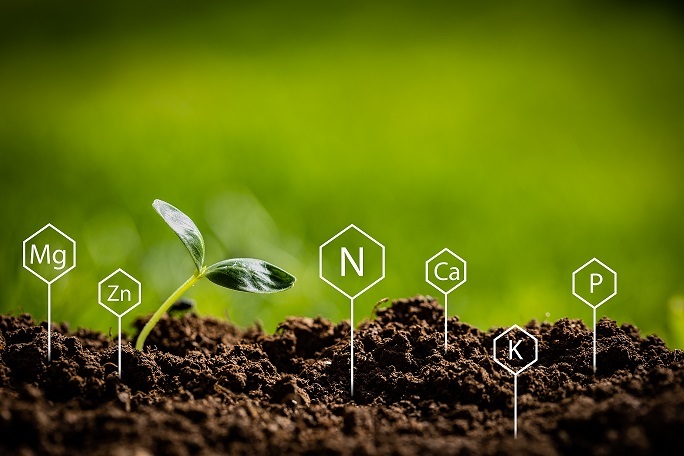
 Data Structure
Data Structure Networking
Networking RDBMS
RDBMS Operating System
Operating System Java
Java MS Excel
MS Excel iOS
iOS HTML
HTML CSS
CSS Android
Android Python
Python C Programming
C Programming C++
C++ C#
C# MongoDB
MongoDB MySQL
MySQL Javascript
Javascript PHP
PHP
- Selected Reading
- UPSC IAS Exams Notes
- Developer's Best Practices
- Questions and Answers
- Effective Resume Writing
- HR Interview Questions
- Computer Glossary
- Who is Who
Introductory Biological Chemistry
Introduction to Biochemistry and its Importance
Biochemistry which is also called as biological chemistry is a branch of science which deals with the study of chemical processes within and around the living organisms.
It can also be defined as a branch of biological science that deals with the study of biochemical reactions by involving biomolecules like nucleic acids, proteins, lipids and carbohydrates. It is also known to be the hybrid branch of organic chemistry that specializes in chemical processes and chemical transformation inside a living cell.
A chemical process is the one in which the reactants react to form a product. This mechanism is also called a transformation.
Anything which falls under the size of molecules and living cell and also incorporated in interactions between them are said to be studied in the field of biochemistry. There are major 6 elements in the nature which are combined to form macromolecules like proteins, nucleic acids, carbohydrates and lipids. These are ?
Oxygen - 65%
Carbon - 18%
Hydrogen - 10%
Nitrogen - 3%
Calcium - 2%
Other elements - 2%
These biomolecules combine to form complex organelles inside the cell which is called as structural and functional unit of organisms.

Study of biochemistry in proteins is considered using a following example ?
Considering the hemoglobin molecule in a red blood cell, biochemists study it as a protein molecule and is concerned with its structure and even minute components of that protein. Heme which is the component of hemoglobin has the central iron atom and surrounding porphyrin group. This Fe atom here helps in attachment of oxygen with the red blood cells.
Biochemists also observe the sequence of protein and the DNA which forms this protein. They also study the functions of these proteins and observe their performance by using enzymes and receptors. Biochemists will also study the effects in organisms due to alteration in protein functioning. Here in this case abnormal red blood cells leads in sickle cell anemia disease. Not just concerning with its abnormalities but these people also look out for the mutations that occur in DNA causing a disease.
Unlike buffer which is used for experiments, cell environment in an organism is much crowded with organelles, biomolecules, etc. Hence Biochemists has to consider the concentrations within a cell while carrying out experiments.
Understanding the lifecycle of proteins also involves the biochemistry studies. Following steps are involved in the life cycle.
First the m-RNA is translated into proteins in ribosome to form a nascent polypeptide chain (unfolded chain of amino acids).
Protein folding occurs using chaperons to form a functional folded structure.
Degradation of folded structure of protein takes place resulting in the small fragments using proteases and proteasome.
These small building blocks are then used for synthesis of complex natural products like antibiotics through template driven polymerizations.
What We Study in Biochemistry?
One must study life at molecular level to truly understand its importance. Some of the major mechanisms that can be understood through the study of biological chemistry includes the following.
Primary metabolism - which includes nucleic acids role in protein synthesis, role of proteins structurally in connective tissue and functionally as an enzyme and lipids and carbohydrates in biological membranes.
Structures and functions of biomolecules.
Biochemical properties and interactions of biomolecules.
Study of genetic material and their biochemistry.
To study the importance of major elements (C, H, P, S, N and O) and some other ions in forming a whole organism.
We can study structure and functions of the cellular components like enzymes, organelles etc. and also the biomolecules.

Methods and Tools
Methods used for macromolecular structural findings - X-ray crystallography, Electron microscopy, NMR spectroscopy.
Other Bioinformatics tools - BLAST.
Fluorescence - Using green fluorescent proteins for proteasomes, small molecules etc. in protein synthesis process.
Kinetics studies - Steady state kinetics which includes, multiple turnover of an enzyme by using excess of substrate etc. pre-steady state kinetics which includes looking at initial moments of the reaction like single turn over by limiting substrate.
Ribosome or protein purification methods.
Assay development which includes different analytical methods - western blots for proteins, immunoprecipitation, radioactivity, affinity measurements etc.
Applications of Biochemistry
Biochemical sciences mainly help in studying the following areas.
Agriculture: Crop cultivation, Pesticides and herbicides.
Nutrition: Ensures enough nutrients required for proper cell functioning.
Medicine: complex cellular environment and molecular mechanisms helps in curing diseases, conversion mechanisms in humans.
Therapeutics: Diagnosis and treatment of diseases, clinical tests.
Conclusion
Biochemistry is the science discipline which majorly deals with the chemical aspects of biology. This also includes the study of biological processes that occur in the living organism at molecular level. Biochemistry mainly focusses on macromolecules like nucleic acids, proteins, lipids and carbohydrates.
With all these things looking inside the cell, biochemistry becomes a major step in the drug discovery pathways. Biochemistry is also concerned with other divisions of science like genetics, molecular biology, pharmacology, pathology, microbiology, structural biology, chemistry etc.

